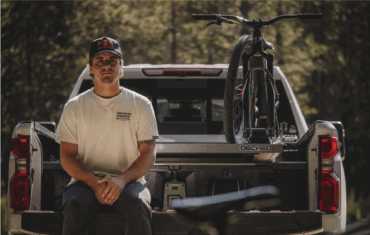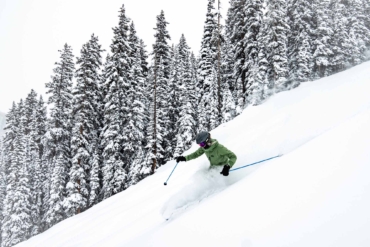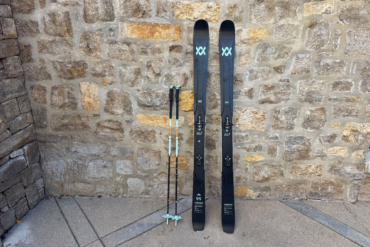Cold and wet, the body’s temperature can drop, leading to hypothermia. These tips will help keep you safe this winter.

The coldest I’ve ever been wasn’t on top of a frozen peak, nor winter camping on a frigid Minnesota winter night. It was cycling on a November day in the Rockies. Wet from rain and low on fuel, I struggled home and spent a miserable afternoon rewarming my body.
The lesson: You don’t have to freeze through a Midwestern winter to experience hypothermia. It can occur in more moderate temperatures or when submerged in cool water. We found some tips from the CDC and added a few practical tips for those specifically in risky outdoors situations.
What Happens to the Body During Hypothermia
The human body is finely tuned, exceptionally capable of regulating its core temperature at a steady 98.6 degrees Fahrenheit. Thanks to our body composition (water has a very high specific heat), it takes a lot to move our core temperature higher or lower.
But once you get too cold, well, it’s tough to warm back up. Hypothermia occurs when the body loses heat faster than it can produce it and the core temperature drops below 95 degrees F.
When in the outdoors, especially in remote areas, it’s important to stay in front of hypothermia and act before symptoms appear if at all possible.
How to Identify Hypothermia
Mild symptoms may include:
- Shivering
- Cold skin
- Exhaustion
- Lack of coordination such as fumbling hands
- Slurred speech
- Memory loss and confusion or poor judgement
Severe symptoms include:
- Stiff muscles
- Lower pulse
- Shallow breathing
- Loss of consciousness
- Shivering – which may stop as the core temperature drops below 90 degrees F
When Can You Get Hypothermia?
Wind, rain, and submersion in cold water are common contributors to hypothermia. But hypothermia can also happen indoors when exposed to temperatures as mild as 50 degrees F for long periods.
How to Avoid: Be Very Mindful of Cold
The human body has internal mechanisms to counter overheating, like sweat. But our bodies aren’t built to deal with the cold. We have brains for that!
So the best way to avoid hypothermia is to use that brain. This means managing your clothing layers, paying attention to changes in weather, and watching your friends to be sure they are not making dangerous mistakes either.
We’ve devised clothing to protect ourselves from the elements. But water can wreak havoc with the insulating properties of your layers.
A few things to watch out for:
- No layers: If you head into the wild in a single light garment covered by a heavy coat, watch out. A lack of layers limits your options for managing your temperature.
- Sweat: Peal off layers before you start sweating while hiking. Soaking clothing with sweat can lead to hypothermia once you stop moving.
- Precipitation: Rain and snow may barely register when you are moving quickly. But stop for a short time, and damp clothing will quickly cool. Remember to block water with a shell layer in cool temps.
- Sudden situational changes: Trail running on a cool fall day, you may not require more than a t-shirt. But what if you roll an ankle and can’t walk out? What if it starts raining? Consider carrying emergency layers when the unplanned pitstop becomes reality.
- Numb fingers: It doesn’t take much of a temperature change for ungloved hands to become nearly worthless. Take action before your hands are limp sausages and simple tasks become nearly impossible.
In summary: A thick parka can shun Old Man Winter on a crisp February day. Bring a rain jacket to keep water off the body and insulating layers dry. And consider bringing a lightweight wind jacket on milder days. Watch out for sweat and moisture, and be mindful of your body and the weather.
How to Treat Hypothermia
Take action:
- Get out of the elements.
- Remove wet clothing.
- Rewarm the center of the body first: head, neck, chest, and groin. If you have access to one, use an electric blanket or heating pad. In the backcountry, reach for warm, dry coats and skin-to-skin contact.
- Drink a warm beverage. Sugary drinks add quick calories and can boost the metabolism.
Things to avoid:
- Avoid warm baths, which can rewarm too quickly and be painful.
- Avoid warming limbs first, which can circulate cold blood back to the core, potentially causing stress on the heart.
- Do not give the person alcoholic drinks; they slow rewarming.
If the body core temperature is below 95 degrees F, seek medical attention.
If the person is not breathing and presumed dead, initiate CPR. A person with severe hypothermia can be unconscious with significantly reduced pulse and shallow breathing. In some cases, people who have appeared dead can be resuscitated.
Worst-Case Scenario
Between 1999 and 2011, hypothermia was responsible for about 1,300 deaths per year. Left untreated, hypothermia is often fatal. But hypothermia can be avoided; prevention and preparedness are your best defenses. Bundle up, it’s cold out there!








